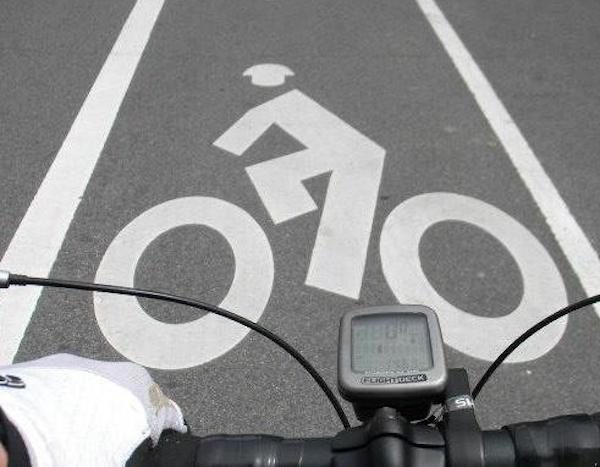The following feature article was funded by our new Patreon community. Want to see more articles like this, exploring important local topics that don’t make our usual news coverage? Join and help fund additional local journalism in Arlington.
There’s an ongoing war being fought on the streets of Arlington.
The skirmishes are fought amongst us daily, for turf, for respect, for safety — and, some would say, for outright survival. The combatants are cars and bicycles, jockeying to safely share a common infrastructure.
Arlington has long prided itself as a “bike friendly” locale. Every bicycle on an Arlington street is potentially one less car on the road, thus reducing traffic congestion and pollution. Cycling also meshes nicely with Arlington’s reputation as one of the fittest communities in the nation.
Consequently, the county has taken numerous steps toward encouraging bike ridership. Recent years have seen the addition of many miles of dedicated bike lanes, including protected lanes, a move supported by a majority of Arlingtonians. Further, Arlington’s enviable network of interconnected bike paths provides a safe and efficient venue for pedal-powered transportation.
But it’s not always possible to physically separate bikes and automobiles. The problem arises from the fact that two modes of transportation, consisting of vehicles of differing size and weight, traveling at different speeds, with different degrees of visibility, often must share the same physical space.
Far too often, the two sides view each other as adversaries. One Arlington cyclist cited his top complaints against motorists as “parking/standing totally or partially in the bike lanes, and not allowing the Virginia state three-foot minimum of clearance when passing a cyclist.”
Drivers find their share of faults in cyclists, as well. “They act as if traffic laws don’t apply to them,” said one motorist. “So many times I’ve waited to safely pass a bicyclist on the road, only to have them zoom by me when I stop at a red light. They then blow through the light, and I have to wait to pass them all over again.”
Undoubtedly, there is bad behavior on both sides. And while these actors may represent only a small portion of each group, they are the ones that tend to stick out, not the majority of thoughtful, law abiding Arlingtonians.
Arlington County law enforcement officials monitor all modes of transportation for potential safety infractions, not merely automobiles.
“The police department’s overall vision for transportation safety in Arlington County focuses on the safety of all travelers. We encourage all who use our roadways to comply with the law and proceed with care and caution to ensure their safety and the safety of others who may be sharing the roads,” said county police spokeswoman Kirby Clark. “Officers observing traffic violations issue citations, based upon their discretion, to travelers, regardless of their mode of transportation.”
The stakes for cyclists are high — according to ACPD’s 2017 Annual Report, there were 80 bicycle-related crashes in Arlington County in 2017, ending a multi-year downward trend. There were 32 such crashes reported in 2016 and 46 in 2015.
It doesn’t require a degree in physics to understand that in a direct encounter between the two, bicyclists are at a far greater safety risk than are drivers. As one cyclist put it, “Any generally bad driving behavior and/or willful ignorance of traffic laws is exacerbated when you are cycling since one doesn’t have the protection of sheet metal and the bulk of a car.”
Arlington County has taken a number of steps in working toward a negotiated truce between the two sides.
The Bicycle Advisory Committee (BAC) advises the County Manager on issues that affect cycling in Arlington, including safety, education, community involvement, awareness and promotion, and the development, operation and maintenance of on- and off-street bicycle transportation and recreation facilities. Elsewhere, county staff and members of a citizens working group are in the final stages of developing a draft update to the Bicycle Element of Arlington County’s Master Transportation Plan.
Education is a critical element of the solution, as well. The county’s PAL program — encouraging drivers, bicyclists and pedestrians to be Polite, Alert and Predictable — seeks to educate all Arlingtonians about ways that they can remain safe regardless of their selected mode of transportation.
The Safe Bicycling Initiative (SBI), a cooperative venture between ACPD and BikeArlington, utilizes education and enforcement to make Arlington’s roads safer for bicycles. SBI’s targeted enforcement throughout the county resulted in numerous citations of both bicyclists and motorists, all of which served as an opportunity for police to increase awareness of the SBI and related traffic laws.
In the end, however, the solution lies out on the roads. The “us versus them” mentality adds to the problem, not the solution. It is critical to respect all users of shared spaces, and to look out for their safety needs. Both sides need to be well educated, and need to be willing and able to put that knowledge into practice.
And when somebody, somewhere, does something wrong — as they inevitably will — it’s important to realize that they are merely an individual behaving badly, and not representative of an entire group.
While such efforts will not be easy, they will make Arlington’s roads safer, and less stressful, for all.
Photo courtesy Sal Ferro


